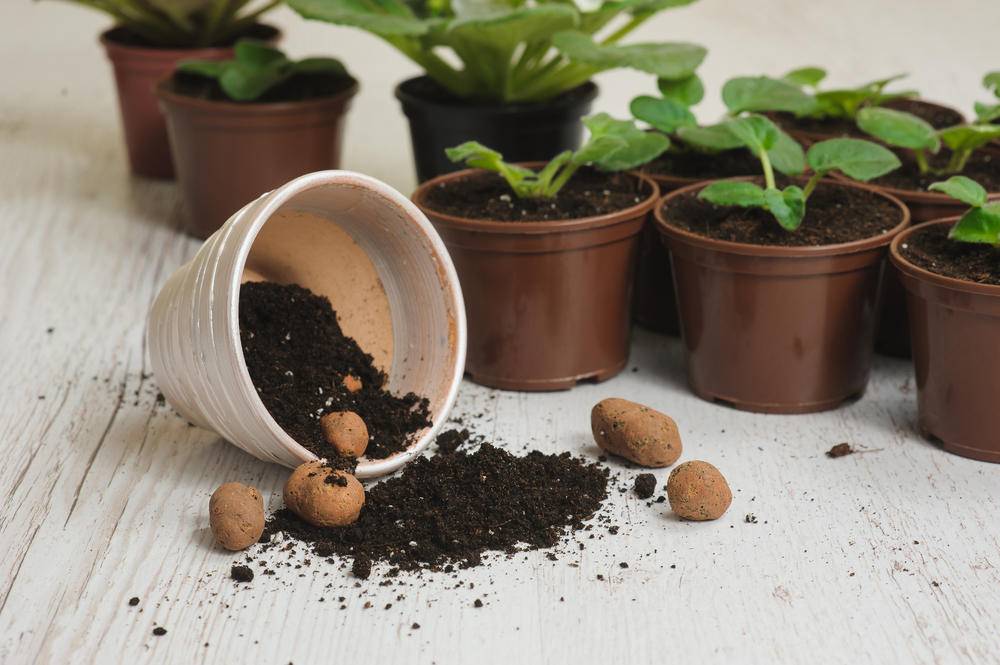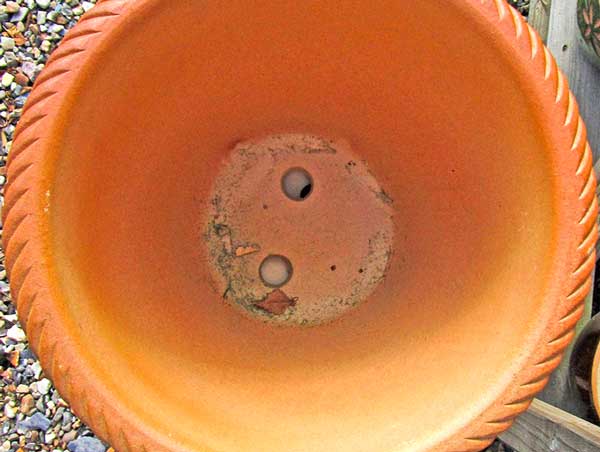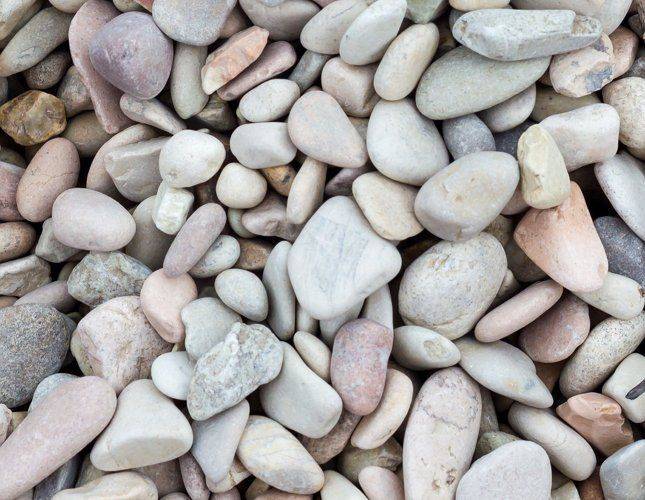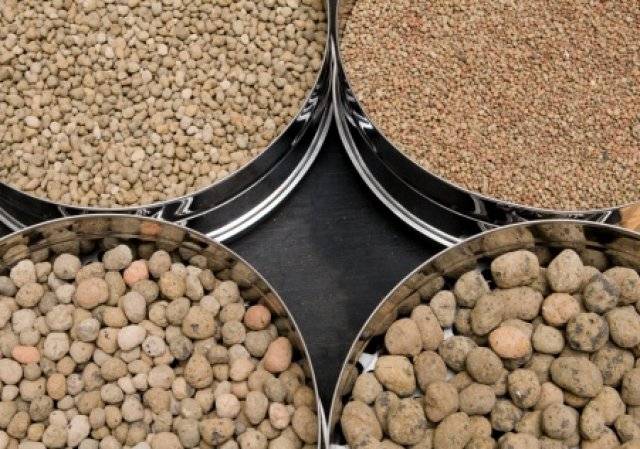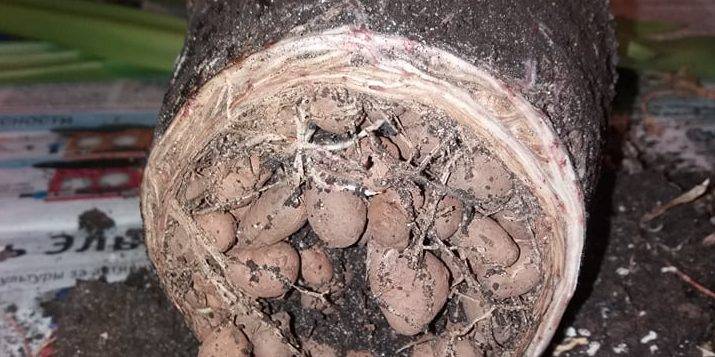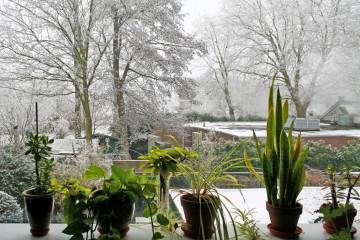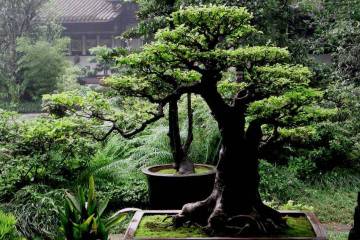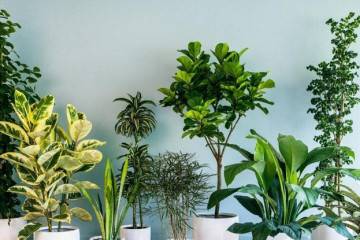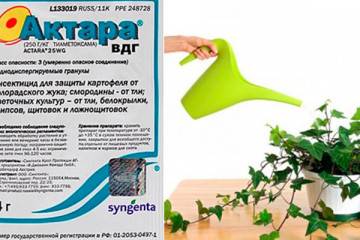Do-it-yourself drainage for indoor plants
Content:
Drainage is an important part of flower care. By neglecting this procedure during planting, the florist runs the risk of ruining the plant or depriving it of its decorative effect and normal growth conditions. Drainage is purchased or made at home.
What is drainage for indoor plants for?
The ideal balance of the components in which the indoor flower grows looks like this:
- 15% oxygen;
- 35% water;
- 50% solids.
The first two indicators provide drainage, removing excess moisture and allowing air to flow to the roots from the bottom of the pot.
Drainage is a system that provides optimal moisture and respiration of the root system in the soil mixture. The system includes a drainage layer, moisture removal holes and auxiliary materials. The latter are mixed with the soil and allow you to retain moisture and provide the necessary conditions for the plants.
The layer is made of materials that:
- good water and air permeability;
- well disentangled from the roots during transplantation, and also do not damage the roots with sharp edges;
- do not enter into chemical bonds with the soil mixture;
- protected from rot and mold.
The average thickness of such a layer is 2-3 cm. It all depends on the requirements of the flower itself to the level of moisture in the soil. It is also important what size the pot is and what holes it has.
The functional purpose of the holes in the pot
The most direct purpose of a leaky bottom of a pot is to remove excess water. The stagnant fluid causes the roots to rot. Also, air passes through these holes to the roots and provides ventilation of the soil in the pot.
Bottom ventilation directly depends on the amount of soil mixture that needs to be drained. The type of green handsome man plays an important role. Epiphytes need ventilation not only at the bottom of the pot, but also along its walls.
The height of the layer of stones at the bottom of the pot is tied to its ability to pass water:
- One hole with a diameter of at least 1 cm in the bottom of the ceramic pot must be covered with a layer of at least 3 cm.
- The average number of small holes in the plastic pot is provided with 5 cm of drainage.
- If the bottom is wide, and there are many holes in it, a layer of 1 cm will be enough.
Other elements and basic requirements
Soil drainage assistants include hydroabsorbents and mineral additives in the soil. They are able to retain moisture in the substrate, distributing it correctly. Keeps the soil moist and does not allow water to evaporate (important for the summer). They serve as soil orderlies, cleaning from harmful salts and toxins.
The drain pan is an auxiliary object for the liquid.
Which drainage is best for indoor flowers
The best drainage system is individual for every green handsome man. Appetite, pot size, as well as the type of root system play a decisive role in the choice of drainage.
Gravel, crushed stone, river pebbles
Natural stones will be the optimal layer on the bottom of the pot. They are combined with all soil mixtures, do not affect the acidity of the soil, and also do not react to fertilizers. Natural drains strictly fulfill their function.
The disadvantages of such a layer include the weight of the stones. Pots with gravel, crushed stone or pebbles become noticeably heavier, which must be taken into account for hanging planters. Also, stones do not keep warm. In winter, such pots should not be left in drafts or through windows of an apartment.
Vermiculite and perlite
Natural moisture storage, volcanic origin. Needed in the soil in equal proportions. But they have differences in properties:
- Vermiculite is rich in minerals, which are given to the plant over time. It is added directly to the ground. Provides the flower with an optimal balance of moisture and oxygen. It is especially useful in summer, and during periods of drought, vermiculite mulch protects the roots from drying out.
- Perlite serves as a loosening agent of the earth, is a conductor of moisture and nutrition during feeding. Perlite can also be used to mulch pots in hot weather. Can be used as a bottom drainage layer, minimum layer 5 cm.
What can be used for drainage when planting indoor plants
During each transplant, the drainage layer must be renewed, washed, calcined. Stones can be used for up to 6 years with proper processing. If large fractions are used, the layer is completely covered with river sand, and then the pot is filled with a substrate.
Using expanded clay for flower drainage
Expanded clay - clay porous pebbles that are perfectly permeable to air and water. This material is lightweight and keeps you warm. The main advantage of this material is moisture retention. The pebbles are literally saturated with water and, if necessary, give it to the roots.
Broken brick
It is similar to expanded clay, as it has a similar composition. When preparing at home, it is important to grind it finely and check for sharp edges. The roots are capable of tightly braiding the fragments, thereby causing damage to themselves.
Ceramic shards
The shards are the same light and warm clay pot protectors. When using broken clay pots, it is important to place the shards in the pot with the bulge facing up. Small fragments should be covered with sand.
How to make drainage for indoor plants with your own hands
You can make the bottom layer for a flower using:
- broken and crushed brick;
- a ceramic pot, breaking it into small particles;
- small stones, gravel collected at their summer cottage;
- the foam remaining after the purchase of equipment - it must be broken into small pieces.
Step-by-step process of filling the material:
- First, the largest pieces are laid out on the bottom, covering the holes in the bottom.
- The middle layer is medium-sized pebbles.
- From above it is covered with the finest crumbs or sand.
The layer of stones should be even, for the same distribution of water in the pot. After filling up all the layers of the pebble, the pot is shaken and knocked on it from the sides.
How can you replace the drainage for flowers at home?
Styrofoam will be a quick alternative to stones. It is a lightweight, warm, moisture-accumulating material at hand. He is in every home, and can help out with transplants for medicinal purposes. The disadvantage of foam is its softness. The root tightly braids small pieces, it is difficult to disentangle it.
A thick layer of sphagnum moss is another drainage method.It disinfects the soil and saturates it with the necessary elements.
Charcoal is a lightweight material with excellent carrying capacity. It can be used as an organic fertilizer with antiseptic properties.
What can not be used as drainage
Materials that are unable to allow moisture or air to pass through are not suitable for drainage. When breeding room greens, you should consider:
- The sand clogs the drainage holes, trapping liquid at the roots and causing them to rot. If the holes are too large, it will wash out over time.
- Eggshells can damage the roots as they have sharp edges. If the shell is not washed and calcined, fungal processes begin to develop in the soil.
- Nutshells, wood chips and bark often rot and mold under the influence of moisture. These processes are transferred to the roots and destroy the flower.
- Marble and granite chips under the influence of water create an alkaline environment that is destructive for the indoor beauty.
The material selected should not interfere with healthy root development.
The main mistakes in the manufacture of drainage
Poor preparation creates inappropriate conditions for the growth and development of the indoor beauty. When making drainage, it is important to know:
- Natural materials have a minimal effect on the chemical composition of the soil.
- Purchased stones have been disinfected and often treated with nutrients for flower growth.
- The drainage at the bottom during planting must be dry. Only some types of expanded clay, vermiculite and perlite need to be soaked.
- Drainage holes must be manually covered with drainage materials. In this case, the soil will not be washed out, clogging the holes.
You can use stones for the aquarium. If there is a surplus of this material, it will do just fine for soil drainage.
Drainage is an indispensable layer for the full development of an indoor phyto-friend. You can do it yourself, or contact the services of a flower shop. Whatever material the bottom of the pot is covered with, it should enrich the soil with oxygen and create the necessary soil moisture. The main thing is that the materials do not spoil the roots of the flower.

